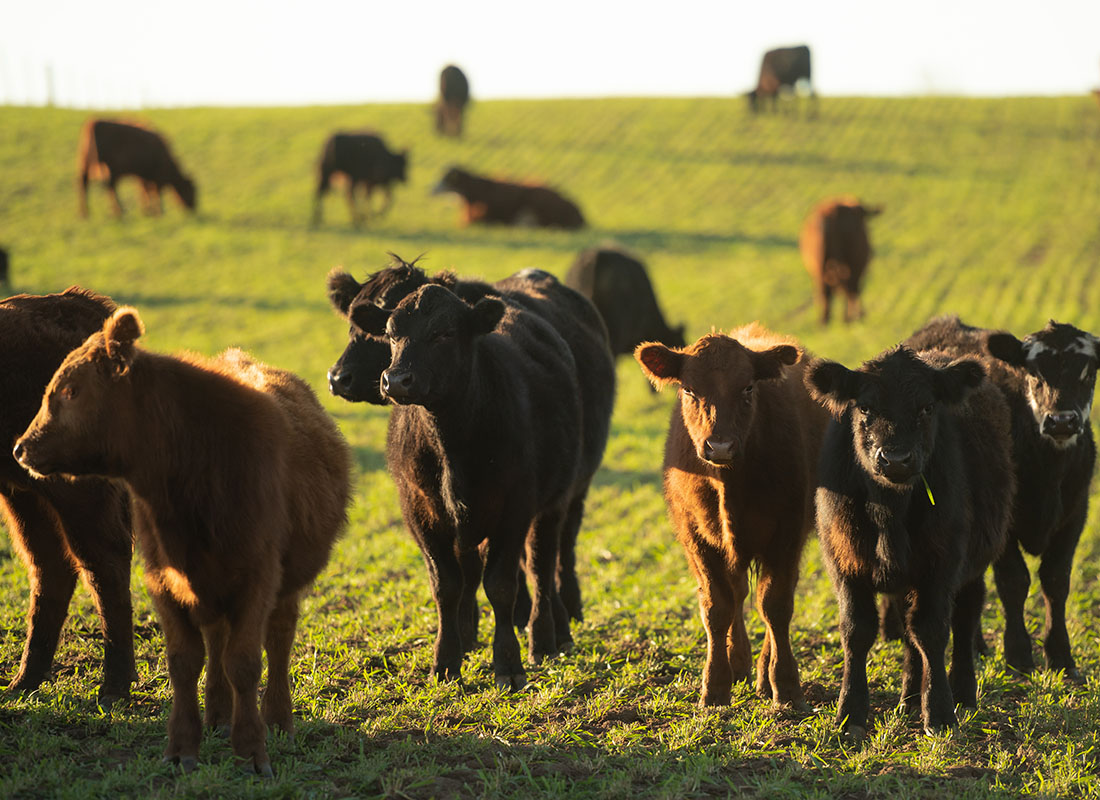Strategic Collaborations for Strength: Bagley Risk Management
Wiki Article
Understanding Livestock Threat Protection (LRP) Insurance Policy: A Comprehensive Guide
Navigating the world of livestock danger security (LRP) insurance coverage can be a complicated venture for lots of in the farming sector. This sort of insurance policy uses a safeguard against market fluctuations and unexpected conditions that can impact livestock producers. By recognizing the ins and outs of LRP insurance coverage, producers can make educated choices that may guard their operations from financial threats. From how LRP insurance functions to the different coverage alternatives available, there is much to discover in this thorough overview that can possibly form the way animals producers come close to danger monitoring in their services.

How LRP Insurance Coverage Works
Periodically, comprehending the mechanics of Livestock Threat Protection (LRP) insurance policy can be complicated, yet breaking down just how it functions can supply clearness for herdsmans and farmers. LRP insurance coverage is a risk monitoring tool made to secure livestock producers versus unanticipated cost decreases. The policy enables manufacturers to establish an insurance coverage degree based on their particular requirements, choosing the variety of head, weight array, and insurance coverage price. When the plan is in area, if market value drop listed below the coverage rate, manufacturers can sue for the difference. It is necessary to keep in mind that LRP insurance coverage is not a profits assurance; instead, it concentrates only on rate risk defense. The insurance coverage duration generally ranges from 13 to 52 weeks, giving flexibility for manufacturers to choose a period that aligns with their manufacturing cycle. By utilizing LRP insurance coverage, herdsmans and farmers can minimize the economic risks related to fluctuating market value, making sure better stability in their operations.Eligibility and Insurance Coverage Options

When it comes to insurance coverage alternatives, LRP insurance policy provides manufacturers the flexibility to choose the insurance coverage degree, insurance coverage period, and endorsements that ideal match their danger monitoring demands. By comprehending the qualification criteria and protection choices offered, livestock producers can make informed decisions to handle risk successfully.
Advantages And Disadvantages of LRP Insurance
When examining Livestock Danger Defense (LRP) insurance, it is crucial for animals manufacturers to weigh the advantages and disadvantages integral in this threat management tool.
One of the main advantages of LRP insurance policy is its capability to give protection against a decrease in livestock costs. In addition, LRP insurance offers a degree of versatility, allowing producers to personalize insurance coverage degrees and policy durations to match their specific requirements.
However, there are also some downsides to take into consideration. One limitation of LRP insurance is that it does not safeguard versus all kinds of threats, such as illness break outs or natural review calamities. In addition, premiums can often be pricey, specifically for manufacturers with huge livestock herds. It is crucial for manufacturers to carefully analyze their private find out this here danger direct exposure and monetary scenario to establish if LRP insurance coverage is the ideal risk administration tool for their operation.
Understanding LRP Insurance Coverage Premiums

Tips for Making The Most Of LRP Perks
Optimizing the advantages of Livestock Threat Defense (LRP) insurance needs calculated preparation and positive risk administration - Bagley Risk Management. To make the many of your LRP insurance coverage, think about the complying with pointers:On A Regular Basis Examine Market Conditions: Keep educated concerning market fads and price variations in the livestock sector. By checking these elements, you can make informed decisions about when to purchase LRP insurance coverage to secure versus potential losses.
Set Realistic Insurance Coverage Degrees: When selecting insurance coverage degrees, consider your production expenses, market worth of animals, and possible risks - Bagley Risk Management. Setting reasonable insurance coverage levels makes certain that you are effectively safeguarded without paying too much for unneeded insurance coverage
Expand Your Coverage: As opposed to depending exclusively on LRP insurance policy, take into consideration expanding your risk management strategies. Incorporating LRP with other threat monitoring tools such as futures contracts or alternatives can give extensive protection against market unpredictabilities.
Evaluation and Adjust Protection Consistently: As market conditions change, periodically assess your LRP insurance coverage to guarantee it straightens with your current danger direct exposure. Adjusting protection degrees and timing of acquisitions can assist maximize your danger defense method. By complying with these tips, you can make best use of the advantages of LRP insurance and secure your livestock procedure against unforeseen dangers.
Final Thought
In verdict, animals danger security (LRP) insurance is a beneficial device for farmers to take care of the financial threats associated with their animals operations. By comprehending just how LRP functions, eligibility and insurance coverage alternatives, as well as the pros and disadvantages of this insurance coverage, farmers can make educated choices to protect their incomes. By thoroughly taking into consideration LRP costs and executing methods to optimize click here to find out more benefits, farmers can minimize potential losses and ensure the sustainability of their operations.
Livestock producers interested in obtaining Animals Risk Defense (LRP) insurance coverage can check out a range of eligibility standards and protection alternatives tailored to their particular animals procedures.When it comes to insurance coverage choices, LRP insurance coverage uses manufacturers the flexibility to pick the coverage degree, coverage duration, and endorsements that finest fit their risk administration requirements.To realize the ins and outs of Livestock Threat Security (LRP) insurance fully, comprehending the variables affecting LRP insurance premiums is important. LRP insurance policy costs are determined by different elements, including the insurance coverage level selected, the expected price of livestock at the end of the insurance coverage duration, the kind of livestock being insured, and the length of the protection period.Testimonial and Readjust Insurance Coverage Frequently: As market conditions change, periodically assess your LRP coverage to guarantee it lines up with your existing danger exposure.
Report this wiki page